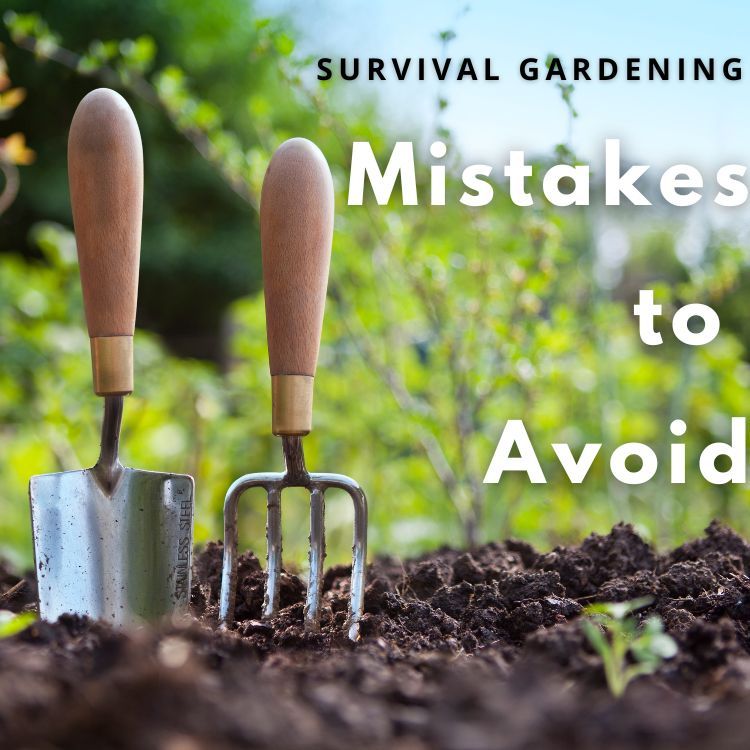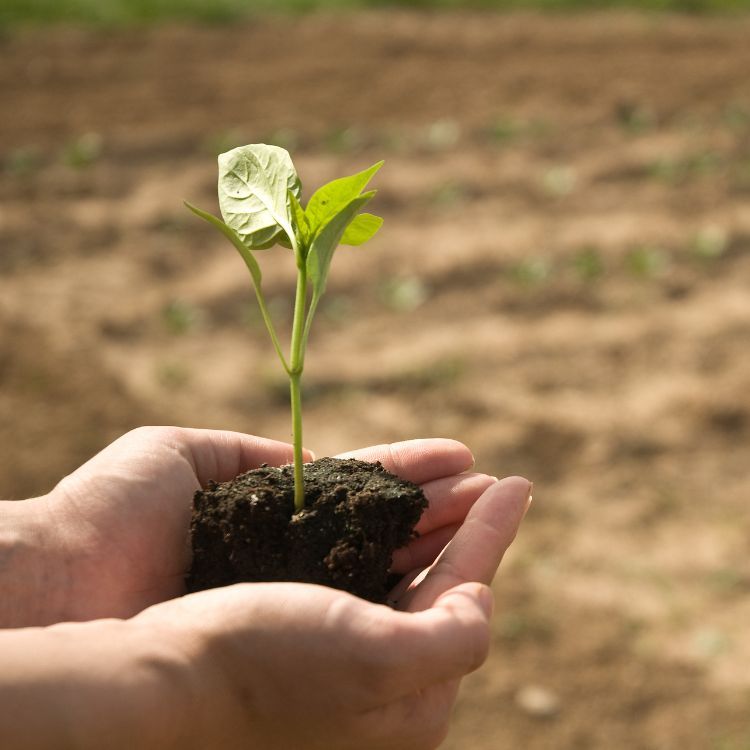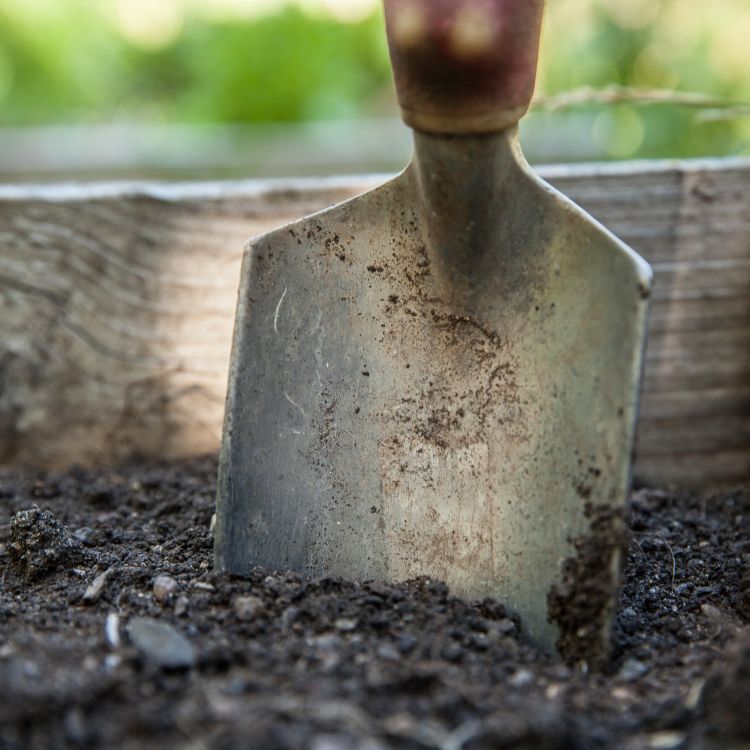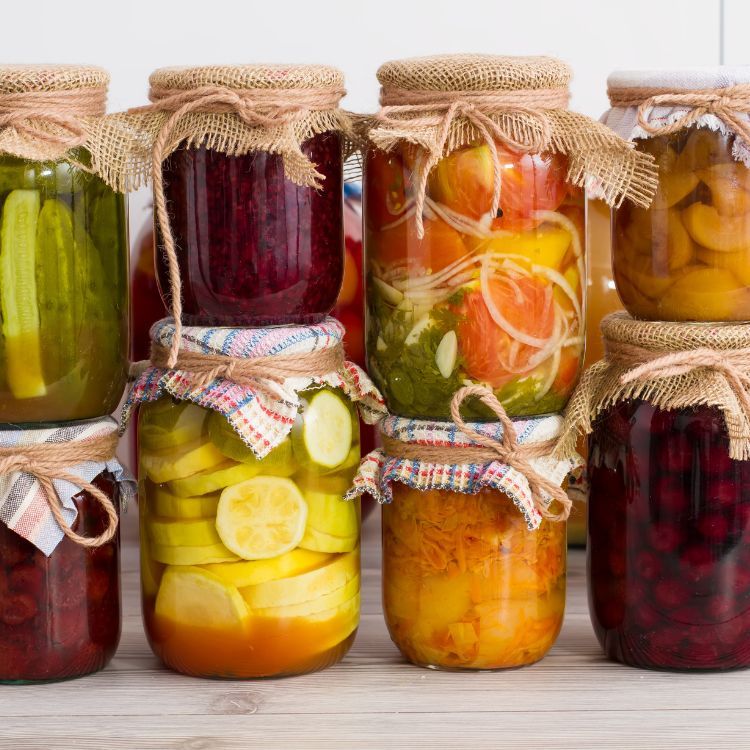
When it comes to starting a survival garden, it’s all about being prepared for the long haul. It’s not just planting seeds and hoping for the best; it’s about cultivating a reliable food source for you and your loved ones. But, as with any great endeavor, mistakes can be made, and in survival gardening, these errors can mean the difference between a bountiful harvest and a barren plot. So, let’s dig in and unearth some common missteps to ensure your garden grows not just surviving, but thriving.
Key Takeaways
Understanding your climate zone is crucial for selecting the right crops for your survival garden.
Water management is key; establish a secure source and learn conservation techniques.
Soil health cannot be overlooked; composting and soil enhancement are vital.
Keep an eye on pests and diseases with organic control strategies and regular monitoring.
Ensure crop diversity and rotation for a sustainable and resilient garden ecosystem.
Seeding Success: Avoid These Survival Garden Blunders
There’s an art to survival gardening, and it starts with sidestepping some all-too-common pitfalls. Whether you’re a green thumb or a gardening newbie, awareness is your first line of defense against these garden gremlins.
Recognizing the Pitfalls Before You Plant
Imagine putting in all that work: tilling, planting, watering, only to realize you’ve made a crucial error that could’ve been avoided with a bit of foresight. That’s why recognizing potential problems from the get-go is essential. Let’s ensure your survival garden is set up for success from day one.
Maximizing Yield with Proper Garden Techniques
It’s not just about avoiding mistakes; it’s about maximizing what you’ve got. With the right techniques, even a small plot of land can produce an impressive yield. We’re going to make sure you have the know-how to squeeze every last bit of productivity out of your garden.
Preserving Your Harvest for Long-Term Sustenance
Besides that, what’s the point of a survival garden if you can’t store and enjoy the fruits of your labor when needed most? We’ll touch on preservation methods that will keep your harvest edible and nutritious through the lean times.
1. Selecting the Wrong Crops

One of the most common mistakes when starting a survival garden is choosing plants that aren’t suited to your climate or soil. It’s like inviting a polar bear to a desert party – it just doesn’t work. Therefore, let’s make sure we’re picking the right guests for your garden party.
Understanding Your Climate Zone
Each region has its unique climate conditions, and it’s vital to choose crops that can thrive in your specific zone. For example, planting heat-loving tomatoes in a region prone to early frosts is asking for disappointment. Instead, focus on crops that are known to do well in your area’s temperature, rainfall, and season length.
Choosing High-Yield, Nutrient-Dense Vegetables
When it comes to survival gardening, you want to get the most bang for your buck. That means selecting plants that not only grow well in your area but also provide high yields and dense nutrition. Think potatoes, beans, squash, and leafy greens. These are the heavy-lifters of the garden world, providing lots of calories and nutrients to keep you going.
2. Inadequate Water Management
Water is life, especially in the garden. But too much or too little can spell disaster for your plants. That’s why proper water management is as crucial as the seeds you sow.
Establishing a Secure Water Source
First things first, you need a reliable water source. Whether it’s a well, rainwater collection system, or a nearby stream, make sure you have access to water that won’t run dry when you need it most. And remember, in a survival situation, this source needs to be sustainable without relying on public utilities. For more tips on avoiding common gardening mistakes, check out common vegetable gardening mistakes.
Employing Water Conservation Practices
Conserving water isn’t just good for the environment; it’s a smart move for survival gardening. Techniques like mulching, using drip irrigation, and planting drought-resistant varieties can help you make the most of every drop. And always water at the base of the plant to reduce evaporation losses.
3. Neglecting Soil Health

Soil is the soul of your garden. Neglecting it is like trying to build a house on sand. You need a strong foundation for your plants to grow, and that means paying attention to the dirt beneath your feet.
Identifying and Enhancing Your Soil Type
Not all soil is created equal. Some are sandy, some are clay, and others are just right – loamy. Figure out what you’re working with and then enhance it. If your soil is heavy and dense, add organic matter like compost to lighten it up. If it’s too sandy and drains too quickly, organic matter can help retain moisture and nutrients.
Composting for Nutrient-Rich Soil
Composting is like a superfood for your garden. It recycles kitchen scraps and yard waste into nutrient-rich gold for your plants. Start a compost pile or bin, and before you know it, you’ll have a steady supply of the good stuff to feed your garden.
For example, turning your kitchen leftovers into compost not only reduces waste but gives your plants a healthy dose of the nutrients they crave, without the need for chemical fertilizers.
4. Ignoring Pest and Disease Control
Ignoring pest and disease control is akin to leaving your front door wide open and expecting no uninvited guests. Pests and diseases can ravage a survival garden, turning all your hard work into a buffet for bugs and blight.
Organic Pest Deterrent Strategies
But fear not, for there are organic ways to keep these invaders at bay. Introducing beneficial insects like ladybugs, planting pest-repelling herbs like basil and mint, and using barriers such as row covers can protect your plants without resorting to harsh chemicals. These methods are not only safer for you and the environment but also ensure a healthier harvest.
Moreover, maintaining a clean garden by removing debris and diseased plants promptly can prevent many pest and disease issues. Healthy plants are less likely to succumb to infestations or infections, so give them the best start possible with good soil, proper watering, and plenty of sunlight.
Monitoring and Managing Plant Diseases
When it comes to diseases, the key is early detection and management. Keep an eye out for signs of trouble, such as discolored leaves or stunted growth. If you spot an issue, remove the affected parts immediately, and consider organic fungicides as a preventative measure. Rotating crops and allowing proper spacing for air circulation also play crucial roles in disease prevention.
5. Overlooking Crop Rotation and Diversity
Crop rotation and diversity aren’t just buzzwords; they’re critical components of a sustainable survival garden. Planting the same crops in the same place year after year is an open invitation for soil depletion and pest infestations.
Planning for Seasonal Crop Rotation
Instead, rotate your crops annually to keep the soil nutrient-rich and pests guessing. This practice involves dividing your garden into sections and planting different families of crops in each section every year. For example, follow tomatoes with leafy greens, then roots, and finally legumes before starting the cycle over again.
Benefits of Polyculture: Diversifying Your Plantings
Polyculture, or planting a variety of crops together, also has its merits. It mimics natural ecosystems, where plant diversity creates a more resilient and balanced garden. This approach can lead to fewer pest problems and a more productive garden overall. For instance, planting marigolds among your vegetables can deter nematodes and other pests, while also adding a splash of color to your garden.
6. Planting at the Wrong Time
Timing is everything, especially in gardening. Plant too early, and your seedlings could be wiped out by a late frost. Plant too late, and the heat could scorch your young plants before they have a chance to mature.
Timing Your Planting with the Seasons
Therefore, it’s crucial to know the best time to plant each crop in your region. This information can usually be found on seed packets or local gardening guides. As a rule of thumb, cool-season crops like peas and spinach can be planted a few weeks before the last frost date, while warm-season crops like tomatoes and peppers should be planted after the danger of frost has passed.
Utilizing Cold Frames and Greenhouses for Extended Seasons
If you’re eager to get a jump on the season or extend it into the cooler months, consider using cold frames or greenhouses. These structures can protect your plants from frost and give you a longer growing season, which is especially valuable in survival gardening where every harvest counts.
7. Forgetting to Plan for Storage and Preservation

After a successful growing season, it’s essential to have a plan for storing and preserving your bounty. Without proper storage, your hard-earned harvest could spoil before you have the chance to enjoy it.
Methods for Long-Term Food Storage
There are several effective methods for long-term food storage. Root cellars provide a cool, dark space for storing root vegetables and hardy fruits like apples. Airtight containers and a cool, dry location can keep grains and legumes safe from pests and moisture. And for those with limited space, consider vertical storage solutions or under-bed containers to maximize your storage capacity.
Canning, Drying, and Freezing Your Harvest
Canning, drying, and freezing are also excellent ways to preserve your harvest. Canning can extend the shelf life of fruits, vegetables, and even meats. Drying herbs and vegetables is simple and can be done with a dehydrator or even just air-drying in a warm, dry place. Freezing is perhaps the easiest method, though it does rely on having a consistent power source.
8. Lack of Knowledge and Skills
Finally, the success of your survival garden hinges on your knowledge and skills. Without the right know-how, you’re likely to make mistakes that could have been easily avoided.
Invest time in learning about the plants you want to grow, the conditions they need to thrive, and the best practices for care and maintenance. Local gardening clubs, extension services, and experienced neighbors are great resources for gaining this knowledge.
And remember, gardening is a lifelong learning process. There’s always something new to discover, and each season brings its own set of challenges and rewards. Embrace the journey, and you’ll find that your skills—and your garden—will grow year after year.
Now that we’ve covered some of the key areas where mistakes can happen, it’s time to put this knowledge into action. And if you’re looking for quality seeds to get your survival garden started, consider visiting Survival Essentials. They offer a wide range of heirloom and non-GMO seeds that could be the perfect foundation for your resilient garden.
Building a survival garden is a practical step towards self-sufficiency, but it also creates a space for learning and growth. As we continue to delve into the essentials of creating a thriving survival garden, let’s explore the resources and community support that can bolster your gardening journey.
Finding Resources and Learning Opportunities
Knowledge is power, especially when it comes to survival gardening. Thankfully, there are abundant resources available for those looking to sharpen their gardening skills. Local libraries, extension offices, and online forums are treasure troves of information. Books on permaculture, organic gardening, and heirloom planting provide a solid foundation, while online courses and YouTube tutorials can offer step-by-step guidance on everything from seed starting to pest control.
Building a Survival Garden Community
They say it takes a village, and the same is true for survival gardening. Connecting with fellow gardeners in your area or online can lead to a valuable exchange of tips, seeds, and support. Joining a community garden or a gardening club can also offer hands-on experience and camaraderie. Sharing successes and challenges with others can make the process more enjoyable and less daunting.
For example, a community seed swap event not only helps you diversify your garden without extra cost but also connects you with experienced gardeners who can offer advice tailored to your local climate and soil conditions.
As you gather knowledge and build relationships with other gardeners, you’ll find that your confidence and capabilities grow alongside your plants. Remember, every gardener was once a beginner, and every plant is an opportunity to learn something new.
Let’s not forget the importance of adapting and staying flexible. Gardens are living systems, and they can be unpredictable. Pests, weather, and other factors can change your plans in an instant, so it’s important to stay nimble and ready to pivot when necessary. This might mean adjusting your watering schedule in response to an unexpected drought or swapping out a crop that’s not thriving for one that’s better suited to current conditions.
Unlock Your Garden’s Potential
With the right approach, your survival garden can be more than just a source of food—it can be a place of learning, resilience, and empowerment. By avoiding common mistakes and adopting best practices, you can unlock the full potential of your garden and ensure that it serves you well, whatever the future holds.
Most importantly, prioritize your efforts. Focus on the tasks that will have the biggest impact on your garden’s productivity. This might mean concentrating on soil health before expanding your planting area or setting up an irrigation system to ensure consistent watering. By tackling the most important tasks first, you’ll set your garden up for success from the start.
Adapting to changes and continuously learning are also key to a successful survival garden. The conditions in your garden will evolve over time, as will your skills and knowledge. Stay open to new ideas and be willing to experiment with different techniques. The more adaptable you are, the more resilient your garden will be.
Frequently Asked Questions (FAQ)
As you embark on your survival gardening journey, you’re bound to have questions. Here are answers to some of the most common queries:
How much land do I need for a survival garden? The amount of land needed for a survival garden depends on your goals and the number of people you’re feeding. A good rule of thumb is about 200 square feet per person for a basic vegetable garden. However, you can make the most of smaller spaces with vertical gardening and container planting.
What are the most calorie-dense crops for survival gardening? When planning a survival garden, opt for crops like potatoes, corn, beans, squash, and grains like wheat and rice. These crops are calorie-dense and can be stored for long periods, making them excellent choices for food security.
Can I rely solely on rainwater for my survival garden? Depending on your climate, relying solely on rainwater can be risky. It’s wise to have a backup plan, such as a rainwater harvesting system or a well, to ensure your garden has a consistent water supply.
Can I Rely Solely on Rainwater for My Survival Garden?
While rainwater can be a primary water source for your garden, it’s important to have a backup plan. Droughts or unpredictable weather patterns can disrupt your supply. Collecting and storing rainwater in barrels or cisterns can provide a buffer during dry spells. For more insights on maximizing your garden’s resilience, consider exploring survival spiral gardens as a space-savvy and sustainable option.
Additionally, implementing water-saving techniques like mulching, using drip irrigation, and planting drought-resistant crops can reduce your garden’s overall water needs, making rainwater a more feasible option.
How Do I Protect My Survival Garden from Wildlife?
Wildlife can be both a blessing and a challenge in a survival garden. To protect your crops, consider fencing, netting, or row covers. Companion planting can also deter certain pests. For example, planting marigolds can help keep rabbits away, while garlic can repel deer.
What Are the Best Resources for Learning About Survival Gardening?
The best resources for learning about survival gardening include local agricultural extension offices, gardening books, online forums, and community workshops. Don’t overlook the value of connecting with experienced gardeners in your area, as they can offer insights specific to your local conditions.
Remember, the most successful survival gardens are those that are well-planned, well-maintained, and adaptable to changing conditions. By learning from common mistakes and continuously improving your skills, you can create a garden that not only survives but thrives, providing you with food security and peace of mind.
And if you’re ready to start your survival garden with quality seeds, make sure to check out Survival Essentials for a diverse selection of heirloom and non-GMO seeds that are perfect for your gardening needs. Whether you’re a seasoned gardener or just starting out, they have the seeds to help your garden grow. Additionally, understanding the importance of heirloom seeds can be crucial for the resilience and sustainability of your survival garden.
When starting a survival garden, it’s important to be aware of the common pitfalls that can undermine your efforts. From neglecting soil health to planting too much too soon, these common gardening mistakes can be easily avoided with a bit of research and planning. By learning from the experiences of others, you can ensure your garden is productive and sustainable for the long term.







Leave a Reply